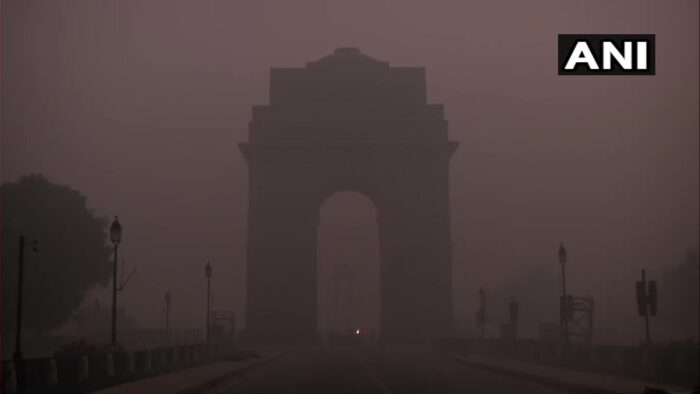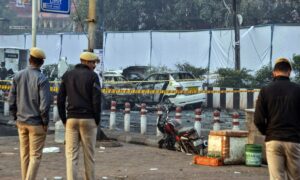
Picture : Twitter / ANI
A severe cold wave swept Delhi on New Year’s Day as the mercury plummeted to 1.1 degrees Celsius, the lowest in 15 years, and “very dense” fog lowered visibility to “zero” metres, affecting traffic movement.
On January 8, 2006, the city had recorded a minimum of 0.2 degree Celsius. The lowest minimum temperature recorded in January last year was 2.4 degrees Celsius, the India Meteorological Department (IMD) said.
Kuldeep Srivastava, the head of the IMD’s regional forecasting centre, said “very dense” fog lowered visibility to “zero” metres at Safdarjung and Palam at 6 am.
According to the IMD, “very dense” fog is when visibility is between 0 and 50 metres. In case of “dense” fog, visibility is between 51 and 200 metres, “moderate” 201 and 500 metres, and “shallow” 501 and 1,000 metres.
The Safdarjung Observatory, which provides representative data for the city, recorded a minimum of 1.1 degrees Celsius, the lowest in January in 14 years.
Delhi recorded a minimum of 3.3 degrees Celsius on Thursday. At 15.2 degrees Celsius, the city recorded the season’s lowest maximum temperature on December 18.
Srivastava said the minimum temperature will start rising under the influence of an “intense” western disturbance which will affect northwest India from January 2 to January 6.
The minimum temperature is predicted to rise to 8 degrees Celsius by January 4-5.
Light rain is also expected in the national capital under the influence of the western disturbance from January 3 to January 5.
The western disturbance will lead to moderate snowfall in the western Himalayan region, the IMD said.
In the plains, the IMD declares a cold wave if the minimum temperature dips to 4 degrees Celsius. A severe cold wave is when the minimum is 2 degrees Celsius or less.
A cold wave is also declared when the minimum temperature is 10 degrees Celsius or below and is 4.5 notches less than normal.
A “severe” cold wave is when the minimum temperature dips to two degrees Celsius or the departure is more than 6.4 degrees.
[the_ad id=’22722′]


















